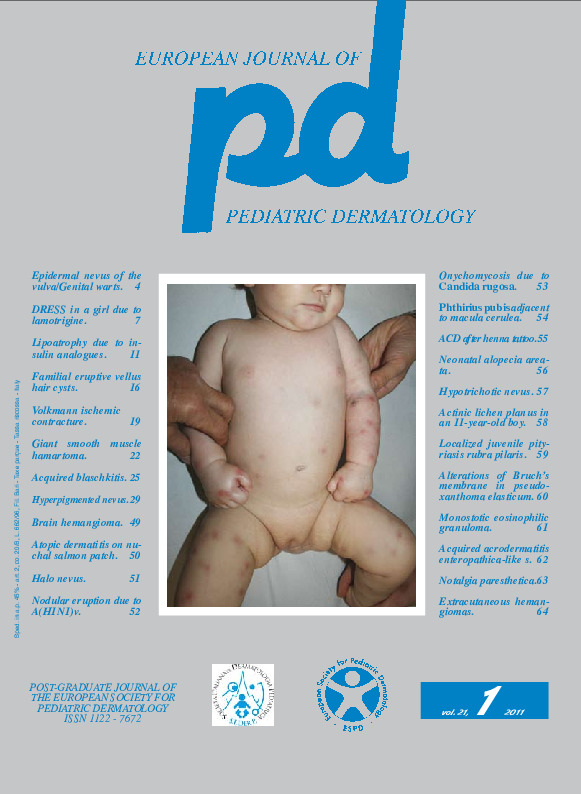Dermoscopic evidence of phthirius pubis adjacent to macula cerulea of the back.
Downloads
How to Cite
Bonifazi E. 2011. Dermoscopic evidence of phthirius pubis adjacent to macula cerulea of the back. Eur. J. Pediat. Dermatol. 21 (1): 54.
pp. 54
Abstract
An 8-year-old boy was first observedfor intermittent eruption of asymptomatic bluish spots,
1-3 cm in size, lasting a few days, arising from a month
on the trunk and on the root of the limbs to a lesser
extent. According to his mother, the eruption was preceded
by fever and abdominal pain, which suggested vasculitis.
The physical examination showed on the back
blue spots (Fig. 1), the largest of which, about 3 cm
in size, was located on the medial margin of the right
scapula (oval). The spots evoked the suspicion of maculae
ceruleae. The eyelashes were full of nits (Fig. 4),
that did not cause itching and were not noticed by his
mother. When putting the dermoscope on the scapular
macula cerulea, we saw at a distance of 1 cm from it a
self-moving Phthirius (Fig. 2 and 3, arrow), then taken
and identified under a microscope (inset of Fig. 3). Removal
of nits with vaseline was prescribed.
Keywords
Dermoscopic evidence, Phthirius pubis, Macula cerulea of the back

